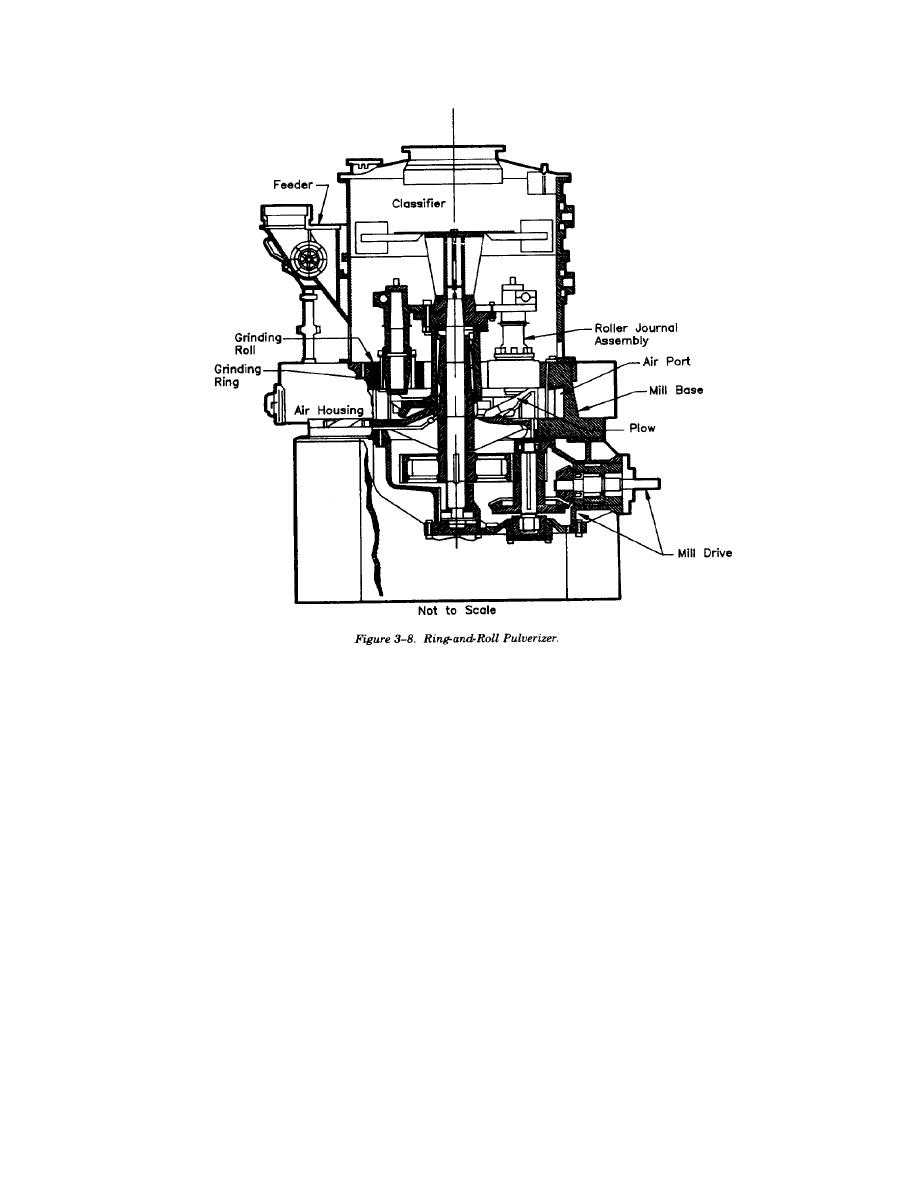
TM 5-810-15
b. Flame safety detectors.
performance during backup fuel firing, and the
(1) Ultra violet type detectors are used on
performance over the lifetime of the unit.
natural gas and some oil fuels, but will not be used
(1) Harmful effects of NOx on the environ-
on pulverized coal boilers since the flame masks
ment include contributions to acid rain, to the
most of the light rays of that type.
destruction of the ozone layer, to global warming,
and to smog.
pulverized coal boilers to detect coal fire.
(2) Components of NOx include nitric oxide
(3) For reliability, with a suitable life span,
solid state type controls should be used for the
(N2O) as a residual pollutant of some NOx control
detectors.
processes. Emissions from combustion processes
c. NOx control options and considerations. Many
are 90 to 95% NO with the balance being NO2.
options are available to reduce NOx emissions as
(3) Title IV of the Clean Air Act
mandated by recent regulations. The nitrogen
Amendments of 1990 (CAAA) requires application
content of fuels, especially oil and even coal,
of low NOx, burner (LNB) technology. Title I of
should be specified in the fuel purchase contract.
the CAAA has more impact in ozone nonattainment
areas which are near the nation*s largest cities.
Restrictions on the nitrogen content will limit fuel
flexibility. A careful analysis of proposed NOx
State implementation plans may place even more
reduction technologies must be performed to ac-
strict limits on NOx Flexibility may be allowed by
count for any required changes to auxiliary equip-
having provisions for averaging NOx emissions
ment and to identify future increases in O&M costs.
over the system.
Important questions that should be answered and
(4) NOx is formed as a result of oxidizing
be a part of the evaluation include the performance
of NOx reduction over the entire load range,
when the nitrogen contained in the fuel is oxidized.
3-13


 Previous Page
Previous Page
